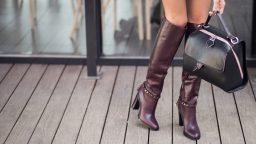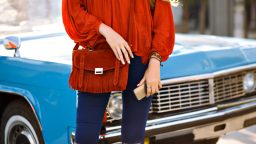The world of fashion is often seen from the outside as glamorous and fast-paced, with collections hitting the runway in dazzling shows. But what goes into creating these collections behind the scenes is a highly meticulous, creative, and collaborative process. From the initial inspiration to the final collection presented to the public, fashion designers work tirelessly to bring their visions to life. If you’ve ever wondered what happens behind closed doors in a fashion house, here’s a peek into the intricate process of how designers create collections.
- Finding Inspiration: The Spark of Creativity
Every collection begins with inspiration. Designers are constantly observing the world around them to find new sources of creativity, whether it’s from art, history, nature, or even personal experiences. The inspiration process is a deeply personal journey that sets the tone for an entire collection.
- Research and Mood Boards: Designers typically start by gathering images, fabrics, and colours that resonate with them. This can be done by creating mood boards—physical or digital collections of images, textures, and colour palettes that encapsulate the overall theme and feeling of the collection. Mood boards help designers visualize the concept and allow them to stay focused throughout the design process.
- Trend Forecasting: While designers may have their own creative vision, they also pay attention to trends that are emerging in the fashion world. These trends are often forecasted months or even years in advance by trend agencies, which help designers predict the colours, patterns, and silhouettes that will be popular in the upcoming seasons. However, designers still aim to create something unique and not simply follow the trends.
- Sketching and Conceptualizing
Once the inspiration has been gathered, designers move to the sketching phase. This is where the creative process really takes shape. Designers begin translating their ideas from the mood board into tangible designs through sketches.
- Hand-Drawn or Digital Sketches: Some designers prefer to sketch by hand, while others use digital tools to create more refined and detailed images. These sketches are often the first visual representation of what the collection will look like. Designers focus on silhouettes, lines, and how fabrics will fall on the body.
- Selecting Fabrics and Textures: At this stage, designers also begin to think about the fabrics and textures they want to use. They’ll test different materials to see how they behave when stitched together, draped over a mannequin, or layered with other fabrics. Fabric choices play a crucial role in bringing a design to life and are key to achieving the desired look and feel of the collection.
- Pattern Making and Prototyping
After the initial sketches, designers turn to pattern making—the process of creating the templates from which garments will be constructed. Pattern makers work closely with designers to bring their sketches into a three-dimensional form.
- Creating the Patterns: Designers or pattern makers will create a set of paper or digital patterns that are the building blocks for each garment. These patterns are cut into fabric to form the initial structure of the pieces.
- Fitting and Adjustments: Once the patterns are created, the first prototypes or “toiles” (trial garments) are made. These early versions are typically made in muslin or other inexpensive fabric. The designer then checks the fit, the drape of the fabric, and the overall look of the garment. Adjustments are made as necessary, and the design is refined.
- Colour and Fabric Selection
Colour plays a huge role in defining the mood of a collection. Designers select their colour palette based on the season, the theme of their collection, and their personal aesthetic. The process of choosing fabrics and colours involves a lot of testing and careful consideration.
- Colour Story: Designers typically select a cohesive colour story that flows throughout the collection. For example, spring collections might feature soft pastels, while autumn/winter collections often include deeper, richer tones. The right mix of colours can make the collection feel cohesive and deliberate.
- Fabric Sourcing: Designers work closely with fabric suppliers to select the perfect materials for their garments. From silk and wool to denim and leather, each fabric is chosen to achieve a particular look, feel, and functionality. Sustainable and innovative fabrics have become a growing focus, with designers seeking eco-friendly options that align with their values.
- Production and Final Garment Construction
Once the design and prototyping process is complete, it’s time to move into production. Depending on the designer, the size of the collection, and the budget, this stage can take place in-house or be outsourced to production houses and seamstresses.
- Sourcing Manufacturers: Designers often collaborate with manufacturers to ensure their garments are made to the highest standards. They may work with skilled artisans, especially for intricate pieces like hand-beaded dresses or tailored suits. For larger collections, the garments may be mass-produced, but attention to detail remains crucial to the final result.
- Final Fittings: The final fitting is an essential part of the process. Garments are tested on models to ensure they fit perfectly, adjusting for any small discrepancies in length or structure. The designer will also assess how the clothes look in motion, ensuring the fabric flows and fits as intended.
- Marketing and Presentation
Once the collection is ready, designers shift their focus to presenting it to the world. This is where the magic of fashion shows, lookbooks, and press coverage come into play. A major component of creating a collection is getting the public to notice it.
- Fashion Shows: The runway is one of the most exciting and anticipated parts of the process. Designers often debut their collections during fashion weeks in cities like Paris, Milan, New York, and London. A well-executed runway show is a dramatic and visual experience that helps the designer communicate the theme and mood of the collection. Models strut down the catwalk, showcasing the new pieces in front of an audience of press, buyers, and influencers.
- Lookbooks and Editorials: Lookbooks, which showcase the pieces from the collection in styled shoots, are used to promote the designs to buyers and the public. Editorials in magazines and online platforms also help get the collection seen by a wider audience.
- Retail and Distribution
After the collection has been presented, it’s time to move into retail and distribution. Designers work with buyers to have their collections stocked in stores or sold online. This is often when collaborations and licensing deals also come into play, helping the designer extend their reach to larger audiences.
- Collaboration and Licensing: Many designers partner with retailers, influencers, or celebrities to create collaborations that broaden their reach and offer more accessible products. These collaborations help generate buzz and excitement, bringing the collection to a wider market.
- Online Presence: With e-commerce becoming an increasingly important channel for retail, many designers now use their online platforms to sell their collections directly to consumers. Social media and digital marketing have become essential tools for promoting and driving sales.
Conclusion
Creating a fashion collection is a highly detailed and collaborative process, from the initial spark of inspiration to the final piece hitting the runway or being sold in stores. Designers carefully consider every aspect—design, fabric, fit, colour, and presentation—ensuring that each collection reflects their creative vision and resonates with their audience. Behind the scenes, it’s not just about the clothes; it’s about passion, hard work, and an understanding of both art and commerce. Whether for a high-end fashion house or a small independent brand, the process of creating a collection is an intricate dance of creativity, craftsmanship, and business acumen.





